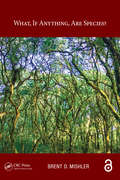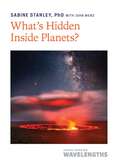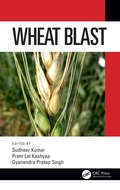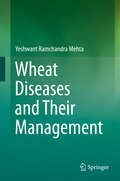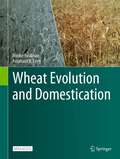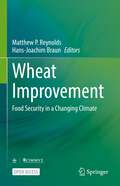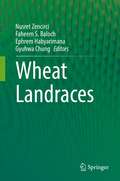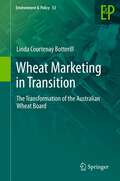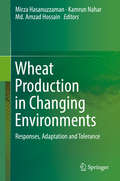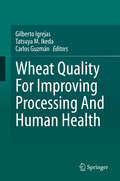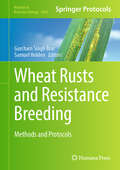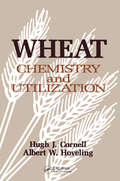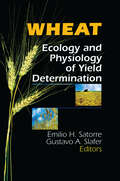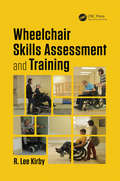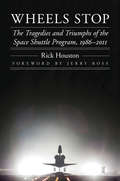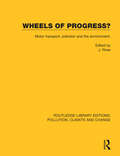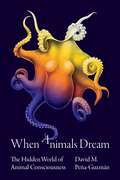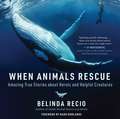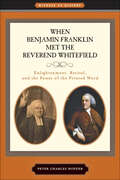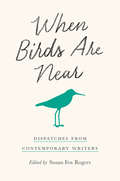- Table View
- List View
What, If Anything, Is Out There?
by Gene P. AbelCOL (USA Ret) and bestselling author Gene P Abel lays out the truth about UFOs and offers readers a fascinating exploration of the existence of an intelligent extraterrestrial race in this exploration of sightings and their potential impact on the future, and security, of the human race. There are few events that would be of more importance, or more startling, than if, in the near future, we found ourselves confronted by another intelligent race with abilities and technology far superior to anything that currently exists on Earth. In What, If Anything, Is Out There? Gene P. Abel, COL (USA Ret.), details historic events that may well have been sightings by our ancestors and begins to explore what these encounters could mean for our security in the future. Drawing upon his years of military experience, Abel offers a unique insider&’s perspective as he guides readers through a thoughtful history into the Roswell incident of 1947 and beyond. In the wake of the Department of Defense acknowledgement that the US Navy has encountered UFOs, and in a moment where sightings are on the rise, What If Anything, Is Out There is a timely, and much-needed, look at the role of intelligent life in the universe.
What, if anything, are species? (Species and Systematics)
by Brent D. MishlerThis book is an extended argument for abandoning the species rank. Instead, the author proposes that the rank of "species" be replaced by a pluralistic and multi-level view. In such a view, all clades including the smallest identifiable one would be named and studied within a phylogenetic context. What are currently called "species" represent different sorts of things depending on the sort of organisms and processes being considered. This is already the case, but is not formally recognized by those scientists using the species rank in their work. Adopting a rankless taxonomy at all levels would enhance academic studies of evolution and ecology and yield practical benefits in areas of public concern such as conservation. The Open Access version of this book, available at http://www.taylorfrancis.com/books/e/9781498714549, has been made available under a Creative Commons Attribution-Non Commercial license. KEY FEATURES • Proposes the replacement of restrictive species concepts with a pluralistic view • Suggests abandoning the formal taxonomic rank of "species" • Considers zoological, botanical, and microbiological aspects of the species level • Deals with practical issues such as conservation, inventories, and field guides
What’s Going On with the Weather? (Weather and Climate (3ES))
by P. David Pearson Jennifer Tilson Suzanne MogensenNIMAC-sourced textbook
Wheat Blast
by Prem Lal Kashyap Sudheer Kumar Gyanendra Pratap SinghWheat Blast provides systematic and practical information on wheat blast pathology, summarises research progress and discusses future perspectives based on current understanding of the existing issues. The book explores advance technologies that may help in deciding the path for future research and development for better strategies and techniques to manage the wheat blast disease. It equips readers with basic and applied understanding on the identification of disease, its distribution and chances of further spread in new areas, its potential to cause yield losses to wheat, the conditions that favour disease development, disease prediction modelling, resistance breeding methods and management strategies against wheat blast. This book’s chapters are contributed by experts and pioneers in their respective fields and it provides comprehensive insight with updated findings on wheat blast research. It serves as a valuable reference for researchers, policy makers, students, teachers, farmers, seed growers, traders, and other stakeholders dealing with wheat.
Wheat Diseases and Their Management
by Yeshwant Ramchandra MehtaWheat Diseases and Their Management addresses biotic and abiotic constrains to wheat production. Besides detailed illustrations and descriptions of the most important diseases of wheat in the world, it offers an updated view on the reemergence of some old diseases and the occurrence of new races of the pathogen. It deals with the sustainability of wheat production through precision agriculture and focuses on the importance of conservation tillage. The book also deals with pillars of integrated disease management which would be eco-friendly and reduce severity of diseases and yield losses, with acquired Latin-American experiences of more than 40 years.
Wheat Evolution and Domestication
by Moshe Feldman Avraham A. LevyThis open access book covers a century of research on wheat genetics and evolution, starting with the discovery in 1918 of the accurate number of chromosomes in wheat. We re-evaluate classical studies that are pillars of the current knowledge considering recent genomic data in the wheat group comprising 31 species from the genera Amblyopyrum, Aegilops, Triticum, and other more distant relatives. For these species, we describe morphology, ecogeographical distribution, phylogeny as well as cytogenetic and genomic features. For crops, we also address evolution under human selection, namely pre-domestication cultivation and domestication. We re-examine the genetic and archeological evidence of where, when, and how domestication occurred. We discuss unique aspects of genome evolution and maintenance under polyploidization, in natural and synthetic allopolyploids of the wheat group. Finally, we propose some thoughts on the future prospects of wheat improvement. As such, it can be of great interest to wheat researchers and breeders as well as to plant scientists and students interested in plant genetics, evolution, domestication, and polyploidy.
Wheat Improvement: Food Security in a Changing Climate
by Matthew P. Reynolds Hans-Joachim BraunThis open-access textbook provides a comprehensive, up-to-date guide for students and practitioners wishing to access in a single volume the key disciplines and principles of wheat breeding. Wheat is a cornerstone of food security: it is the most widely grown of any crop and provides 20% of all human calories and protein. The authorship of this book includes world class researchers and breeders whose expertise spans cutting-edge academic science all the way to impacts in farmers’ fields. The book’s themes and authors were selected to provide a didactic work that considers the background to wheat improvement, current mainstream breeding approaches, and translational research and avant garde technologies that enable new breakthroughs in science to impact productivity. While the volume provides an overview for professionals interested in wheat, many of the ideas and methods presented are equally relevant to small grain cereals and crop improvement in general. The book is affordable, and because it is open access, can be readily shared and translated -- in whole or in part -- to university classes, members of breeding teams (from directors to technicians), conference participants, extension agents and farmers. Given the challenges currently faced by academia, industry and national wheat programs to produce higher crop yields --- often with less inputs and under increasingly harsher climates -- this volume is a timely addition to their toolkit.
Wheat Landraces
by Ephrem Habyarimana Nusret Zencirci Faheem S. Baloch Gyuhwa ChungLandraces possess a very large genetic base in population structure and are dynamic populations of cultivated plants with historical origin, distinct identity, and without any formal crop improvement. They are often genetically diverse, locally adapted, and associated with traditional farming systems. Resistance genes to biotic and abiotic stress factors, which are especially diversified in landraces, are of great interest to plant breeders, faced with global climate challenge. In addition, gene pools made of different landraces grown in different ecological conditions can be used for wheat breeding to enhance quality; yield and other desirable agricultural parameters. An estimated 75% of the genetic diversity of crop plants was lost in the last century due to the replacement of high yielding modern varieties. There is, thus, an urgent need to preserve existing species, not only for posterity but also as a means to secure food supply for a rising world population. In this book, we provide an overview of wheat landraces with special attention to genetic diversities, conservation, and utilization.
Wheat Marketing in Transition
by Linda Courtenay BotterillThis detailed account tells the background story of a privatised monopoly whose sharp practices embroiled a national government in scandal and shocked a nation that prides itself on the strength of its institutions. AWB Limited, the former Australian Wheat Board that in the 1990s was sold into the private sector, paid more than $US200m in kickbacks to the pariah regime of Saddam Hussein in Iraq, exploiting the provisions of the United Nations' Oil for Food program by inflating the price of the wheat it sent there to disguise the pay-offs that secured the contracts. The ensuing uproar threatened the careers of key cabinet ministers in the Howard government and contributed to the rise and subsequent election victory of the Australian Labor Party's Kevin Rudd.
Wheat Production in Changing Environments: Responses, Adaptation and Tolerance
by Mirza Hasanuzzaman Kamrun Nahar Md. Amzad HossainThis book presents recent advances in global wheat crop research, including the effects of abiotic stresses like high and low temperatures, drought, hypoxia, salinity, heavy metals, nutrient deficiency, and toxicity on wheat production. It also highlights various approaches to alleviate the damaging effects of abiotic stress on wheat as well as advanced approaches to develop abiotic-stress-tolerant wheat crops. Wheat is probably one of the world’s most important cereals; it is a staple food in more than 40 countries, and because of its adaptability is cultivated in almost every region. Global wheat production has more than doubled in the last 50 years due to higher yields. However, despite their high yield potential, modern wheat cultivars are often subject to crop loss due to the abiotic stresses. As such, plant breeders have long aimed to improve tolerance in order to maintain yield. Written by 85 experts, and offering the latest insights into wheat responses and tolerance to various abiotic stresses, it is a valuable tool for agronomists, plant breeders, plant physiologists and students in the field of plant science and agriculture. It is the first book to comprehensively cover past and current abiotic stress problems and tolerance mechanisms.
Wheat Quality For Improving Processing And Human Health
by Gilberto Igrejas Tatsuya M. Ikeda Carlos GuzmánWheat Quality for Improving Processing and Human Health brings together an international group of leading wheat scientists to outline highly relevant and diverse aspects and the latest advances in understanding of the world’s most consumed cereal. Topics covered include LMW glutenins, starch-related proteins, and the impact of processing on composition and consumer health. Individual chapters focus on important factors such as FODMAPs, protein structure, dough viscoelasticity and fumonisins. The environmental effects on allergen content are comprehensively covered, as are phenolic compounds and molecular markers. The major quality screening tools and genetic resources are reviewed in depth. Gluten is a major focus of this work with chapters dedicated to health effects, analytical methods and standards, proteomics and mutant proteins. Starting in 2015, wheat quality scientists from across the globe have united to develop the Expert Working Group for Improving Wheat Quality for Processing and Health under the umbrella of the Wheat Initiative. This joint effort provides a framework to establish strategic research and organisation priorities for wheat research at the international level in both developed and developing countries. This Expert Working Group aims to maintain and improve wheat quality for processing and health under varying environmental conditions. The Group focuses on a broad range of wheat quality issues including seed proteins, carbohydrates, nutrition quality and micronutrient content, grain processing and food safety. Bioactive compounds are also considered, both those with negative effects such as allergens and mycotoxins, and those with positive effects such as antioxidants and fibre. The Group also works in the development of germplasm sets and other tools that promote wheat quality research. Wheat quality specialists working on the wheat value chain, and nutritionists will find this book a useful resource to increase and update their knowledge of wheat quality, nutrition and health issues.
Wheat Rusts and Resistance Breeding: Methods and Protocols (Methods in Molecular Biology #2898)
by Gurcharn Singh Brar Samuel HoldenThis detailed volume collects techniques for increasing our understanding of wheat rust pathogens, the host plant, and the interactions between the two. Beginning with routine and advanced tools used for pathogen surveillance, characterization, and field assessment of germplasm for resistance, the book continues with sections on genetic analysis and breeding for rust resistance, as well as rust management through fungicidal approaches. Written for the highly successful Methods in Molecular Biology series, chapters include introductions to their respective topics, lists of the necessary materials and reagents, step-by-step and readily reproducible laboratory protocols, and tips on troubleshooting and avoiding known pitfalls. Authoritative and practical, Wheat Rusts and Resistance Breeding: Methods and Protocols serves as an ideal guide for established researchers looking to familiarize themselves with new innovations and for new researchers working to strengthen their understanding of rust pathogens.
Wheat: Chemistry and Utilization
by Hugh Cornell Albert W. Hoveling"This book meets the need for a comprehensive, up-to-date review of wheat chemistry, processing and uses. It provides the reader with extensive new information on wheat components that will be useful in better commercial utilization of wheat and the formulation of new and upgraded wheat-based food products. The book serves as a one-volume information resource for all those involved in the research, development, formulation, and evaluation of wheat-based food products. From the Authors' PrefaceWheat continues to be one of the world's most important grains, especially as a food, where the unique properties of its products can be utilized to advantage. It provides an excellent example of a natural product from which a wide range of useful by-products can be made. This book discusses the components of the wheat kernel, which provide interesting examples of study of carbohydrate and protein chemistry, as well as lipids, minerals and vitamins. This book should serve as a useful reference for the cereal chemist, as well as chemists and food technologists in those industries in which by-products of flour are used, e.g., the confectionery industry in which modified starches and starch syrups are used. In addition, nutritionists, dieticians, and many kinds of researchers will find chapters of interest. Particular attention is given to particle-size determinations, an important area in food processing, and to the role of wheat proteins in gluten intolerance and wheat allergy. . . . Both the milling of wheat and flour quality are discussed in order to give the reader an idea of the distribution of the major components and the importance of proper size reduction. The book also has a chapter on wet milling of wheat flour . . . and chapters on the properties and uses of wheat starch, starch syrups, and chemically modified wheat starch.
Wheat: Ecology and Physiology of Yield Determination
by Gustavo A Slafer E H SatorreDiscussing the latest processes involved in researching yield generation, Wheat: Ecology and Physiology of Yield Determination will help you design various types of crop production systems for maximum yield. Featuring information on developing high-yielding, low-input, and quality-oriented systems, this book offers you both physiological and ecological approaches that will help you understand the crop as well as increase its production. Discussing aspects of wheat growth for specific regions around the world, Wheat provides you with information that will improve the size and quality of your crops, including: how temperature, vernalization, and the photoperiod affect the development of wheat using the correct amount of nitrogen fertilizers for wheat crops an explanation of the reproduction and nitrogen cycles of wheat how elements and conditions such as lipids, proteins, nitrogen, and climate enhance grain quality estimating and determining optimal sowing dates examining factors that may affect wheat yield-density relationships, such as planting arrangement and date of sowing preventing seed decay and examining effects of mildews and leaf blights examining historical trends of the crop to see what further research needs to be done You'll also receive information on the genetic gains in wheat research that are improving the physiological traits and numerical components of this essential grain. Within Wheat, you'll find data and methods from international experts in the field that will improve the yield and growth of the world's most important crop.
Wheelchair Skills Assessment and Training (Rehabilitation Science in Practice Series)
by R. Lee KirbyThis book provides a wide spectrum of readers with comprehensive but easily understandable protocols for the assessment and training of wheelchair skills. The Wheelchair Research Team at Dalhousie University and the Capital District Health Authority in Halifax (lead by the author) have focused on wheelchair safety and performance for three decades, as exemplified through the Wheelchair Skills Program. This is considered the top such program in the world. This new book is largely based on this program which has been accessed and utilized by over 75,000 people in 177 countries since 2007.
Wheels Stop: The Tragedies and Triumphs of the Space Shuttle Program, 1986-2011 (Outward Odyssey: A People's History of Spaceflight)
by Rick HoustonHumanity&’s first reusable spacecraft and the most complex machine ever built, NASA&’s Space Shuttle debuted with great promise and as a dependable source of wonder and national pride. But with the Challenger catastrophe in 1986, the whole Space Shuttle program came into question, as did NASA itself, so long an institution that was seemingly above reproach. Wheels Stop tells the stirring story of how, after the Challenger disaster, the Space Shuttle not only recovered but went on to perform its greatest missions. From the Return to Flight mission of STS-26 in 1988 to the last shuttle mission ever on STS-135 in 2011, Wheels Stop takes readers behind the scenes as the shuttle&’s crews begin to mend Cold War tensions with the former Soviet Union, conduct vital research, deploy satellites, repair the Hubble Space Telescope, and assist in constructing the International Space Station. It also tells the heart-wrenching story of the Columbia tragedy and the loss of the magnificent STS-107 crew.As complex as the shuttle was, the people it carried into orbit were often more so—and this is their story, too. Close encounters with astronauts, flight controllers, and shuttle workers capture the human side of the Space Shuttle&’s amazing journey—and invite readers along for the ride. Browse more spaceflight books at upinspace.org.Purchase the audio edition.
Wheels of Progress?: Motor transport, pollution and the environment.
by J. RoseOriginally published in 1973 and based on papers published in The International Journal of Environmental Studies, this book discusses the impact of road vehicles on the environment. Particular stress is laid on the design of towns and vehicles, economic problems associated with these, the responsibility of planners and the integration of transport planning and environmental planning at local, regional and national levels. Subsequent sections cover the science of accident research and legislation, particularly dealing with global pollution control. Many of the problems discussed remain as pressing today as when this book was first published.
When Animals Dream: The Hidden World of Animal Consciousness
by David M. Peña-GuzmánA spellbinding look at the philosophical and moral implications of animal dreamingAre humans the only dreamers on Earth? What goes on in the minds of animals when they sleep? When Animals Dream brings together behavioral and neuroscientific research on animal sleep with philosophical theories of dreaming. It shows that dreams provide an invaluable window into the cognitive and emotional lives of nonhuman animals, giving us access to a seemingly inaccessible realm of animal experience.David Peña-Guzmán uncovers evidence of animal dreaming throughout the scientific literature, suggesting that many animals run “reality simulations” while asleep, with a dream-ego moving through a dynamic and coherent dreamscape. He builds a convincing case for animals as conscious beings and examines the thorny scientific, philosophical, and ethical questions it raises. Once we accept that animals dream, we incur a host of moral obligations and have no choice but to rethink our views about who animals are and the interior lives they lead.A mesmerizing journey into the otherworldly domain of nonhuman consciousness, When Animals Dream carries profound implications for contemporary debates about animal cognition, animal ethics, and animal rights, challenging us to regard animals as beings who matter, and for whom things matter.
When Animals Rescue: Amazing True Stories about Heroic and Helpful Creatures
by Belinda RecioA Collection of True Tales of Animal Empathy and Altruism that will Inspire Us to Reflect on Our Own Human Nature What do stories about humpback whales protecting a biologist from a shark, a pride of lions rescuing a girl from kidnappers, gorillas working together to dismantle poacher snares, a parrot warding off an attacker in a park, a chimpanzee consoling a human, and an elephant trying to rescue a baby rhino tell us about animal nature? And what might they suggest about our very own human nature? Until just a few decades ago, there were only a few animals reported to behave empathetically and altruistically. More recently, the list of species who have been observed behaving in compassionate, helpful, and caring ways has grown exponentially, ranging from rats to elephants. Rescued by a Whale presents dozens of astonishing and heart-warming stories about animals, such as chickens, horses, dolphins, and wolves, who engage in acts of helpful kindness. During a time in history when studies show that human empathy is decreasing, our knowledge about animal empathy is increasing. These true tales of heroism, kindness, and compassion suggest that we have far more in common with other animals than we once believed and provocatively suggest that what&’s best about our human natures just might be our animal natures.
When Benjamin Franklin Met the Reverend Whitefield: Enlightenment, Revival, and the Power of the Printed Word (Witness to History)
by Peter Charles HofferIn the 1740s, two quite different developments revolutionized Anglo-American life and thought—the Enlightenment and the Great Awakening. This book takes an encounter between the paragons of each movement—the printer and entrepreneur Benjamin Franklin and the British-born revivalist George Whitefield—as an opportunity to explore the meaning of the beginnings of modern science and rationality on one hand and evangelical religious enthusiasm on the other.There are people who both represent the times in which they live and change them for the better. Franklin and Whitefield were two such men. The morning that they met, they formed a long and lucrative partnership: Whitefield provided copies of his journals and sermons, Franklin published them. So began one of the most unique, mutually profitable, and influential friendships in early American history. By focusing this study on Franklin and Whitefield, Peter Charles Hoffer defines with great precision the importance of the Anglo-American Atlantic World of the eighteenth century in American history. With a swift and persuasive narrative, Hoffer introduces readers to the respective life story of each man, examines in engaging detail the central themes of their early writings, and concludes with a description of the last years of their collaboration. Franklin’s and Whitefield’s intellectual contributions reach into our own time, making Hoffer's readable and enjoyable account of these extraordinary men and their extraordinary friendship relevant today.Also in the Witness to History seriesThe Huron-Wendat Feast of the Dead: Indian-European Encounters in Early North America by Erik R. SeemanKing Philip's War: Colonial Expansion, Native Resistance, and the End of Indian Sovereignty by Daniel R. MandellThe Caning of Charles Sumner: Honor, Idealism, and the Origins of the Civil War by Williamjames Hull HofferBloodshed at Little Bighorn: Sitting Bull, Custer, and the Destinies of Nations by Tim Lehman
When Benjamin Franklin Met the Reverend Whitefield: Enlightenment, Revival, and the Power of the Printed Word (Witness to History)
by Peter Charles HofferThe story of a unique friendship in colonial America between a Founding Father and a founder of the evangelical movement. In the 1740s, two very different developments revolutionized Anglo-American life and thought—the Enlightenment and the Great Awakening. This book takes an encounter between the paragons of each movement—the printer and entrepreneur Benjamin Franklin and the British-born revivalist George Whitefield—as an opportunity to explore the meaning of the beginnings of modern science and rationality on one hand and evangelical religious enthusiasm on the other. There are people who both represent the times in which they live and change them for the better. Franklin and Whitefield were two such men. The morning that they met, they formed a long and lucrative partnership: Whitefield provided copies of his journals and sermons, Franklin published them. So began a unique, mutually profitable, and influential friendship. By focusing this study on Franklin and Whitefield, Peter Charles Hoffer defines with great precision the importance of the Anglo-American Atlantic World of the eighteenth century in American history. With a swift and persuasive narrative, Hoffer introduces readers to the respective life story of each man, examines in engaging detail the central themes of their early writings, and concludes with a description of the last years of their collaboration. Franklin&’s and Whitefield&’s intellectual contributions reach into our own time, making Hoffer&’s enjoyable account of these extraordinary men and their extraordinary friendship relevant today.</
When Birds Are Near: Dispatches from Contemporary Writers
In this dazzling literary collection, writers explore and celebrate their lives with and love for birds—detailing experiences from Alaska to Bermuda, South Dakota to Panama. In When Birds Are Near, fresh new voices as well as seasoned authors offer tales of adventure, perseverance, and fun, whether taking us on a journey down Highway 1 to see a rare California Condor, fighting the destruction of our grasslands, or simply watching the feeder from a kitchen window.But these essays are more than just field notes. The authors reflect on love, loss, and family, engaging a broad array of emotions, from wonder to amusement. As Rob Nixon writes, "Sometimes the best bird experiences are defined less by a rare sighting than by a quality of presence, some sense of overall occasion that sets in motion memories of a particular landscape, a particular light, a particular choral effect, a particular hiking partner." Or, as the poet Elizabeth Bradfield remarks, "We resonate with certain animals, I believe, because they are a physical embodiment of an answer we are seeking. A sense of ourselves in the world that is nearly inexpressible." When Birds Are Near gives us the chance to walk alongside these avid appreciators of birds and reflect on our own interactions with our winged companions.Contributors: Christina Baal, Thomas Bancroft, K. Bannerman, R. A. Behrstock, Richard Bohannon, Elizabeth Bradfield, Christine Byl, Susan Cerulean, Sara Crosby, Jenn Dean, Rachel Dickinson, Katie Fallon, Jonathan Franzen, Andrew Furman, Tim Gallagher, David Gessner, Renata Golden, Ursula Murray Husted, Eli J. Knapp, Donald Kroodsma, J. Drew Lanham, John R. Nelson, Rob Nixon, Jonathan Rosen, Alison Townsend, Alison Világ
When Brains Dream: Exploring The Science And Mystery Of Sleep
by Antonio Zadra Robert StickgoldA comprehensive, eye-opening exploration of what dreams are, where they come from, what they mean, and why we have them. Questions on the origins and meaning of dreams are as old as humankind, and as confounding and exciting today as when nineteenth-century scientists first attempted to unravel them. Why do we dream? Do dreams hold psychological meaning or are they merely the reflection of random brain activity? What purpose do dreams serve? When Brains Dream addresses these core questions about dreams while illuminating the most up-to-date science in the field. Written by two world-renowned sleep and dream researchers, it debunks common myths?that we only dream in REM sleep, for example—while acknowledging the mysteries that persist around both the science and experience of dreaming. Antonio Zadra and Robert Stickgold bring together state-of-the-art neuroscientific ideas and findings to propose a new and innovative model of dream function called NEXTUP—Network Exploration to Understand Possibilities. By detailing this model’s workings, they help readers understand key features of several types of dreams, from prophetic dreams to nightmares and lucid dreams. When Brains Dream reveals recent discoveries about the sleeping brain and the many ways in which dreams are psychologically, and neurologically, meaningful experiences; explores a host of dream-related disorders; and explains how dreams can facilitate creativity and be a source of personal insight. Making an eloquent and engaging case for why the human brain needs to dream, When Brains Dream offers compelling answers to age-old questions about the mysteries of sleep.

